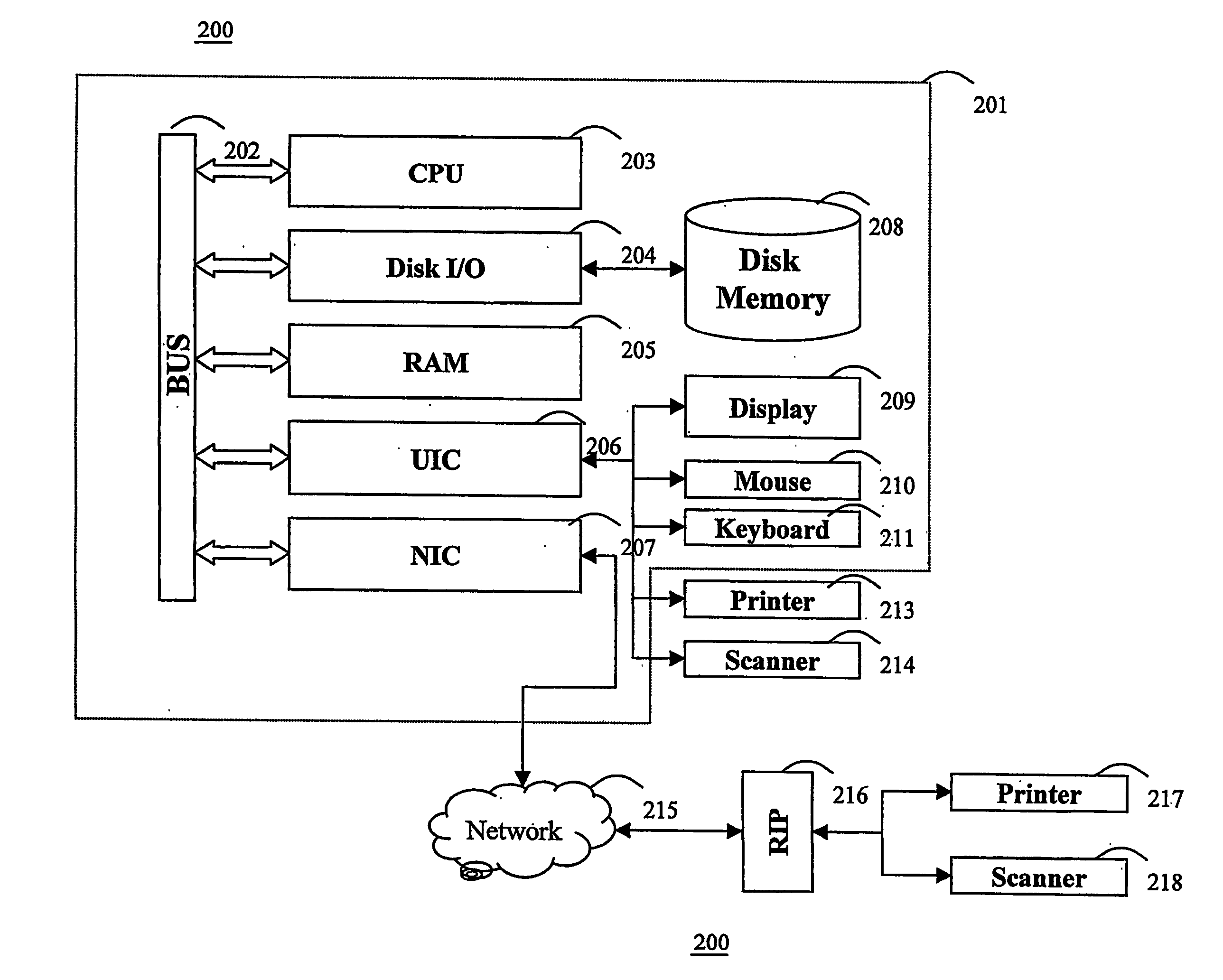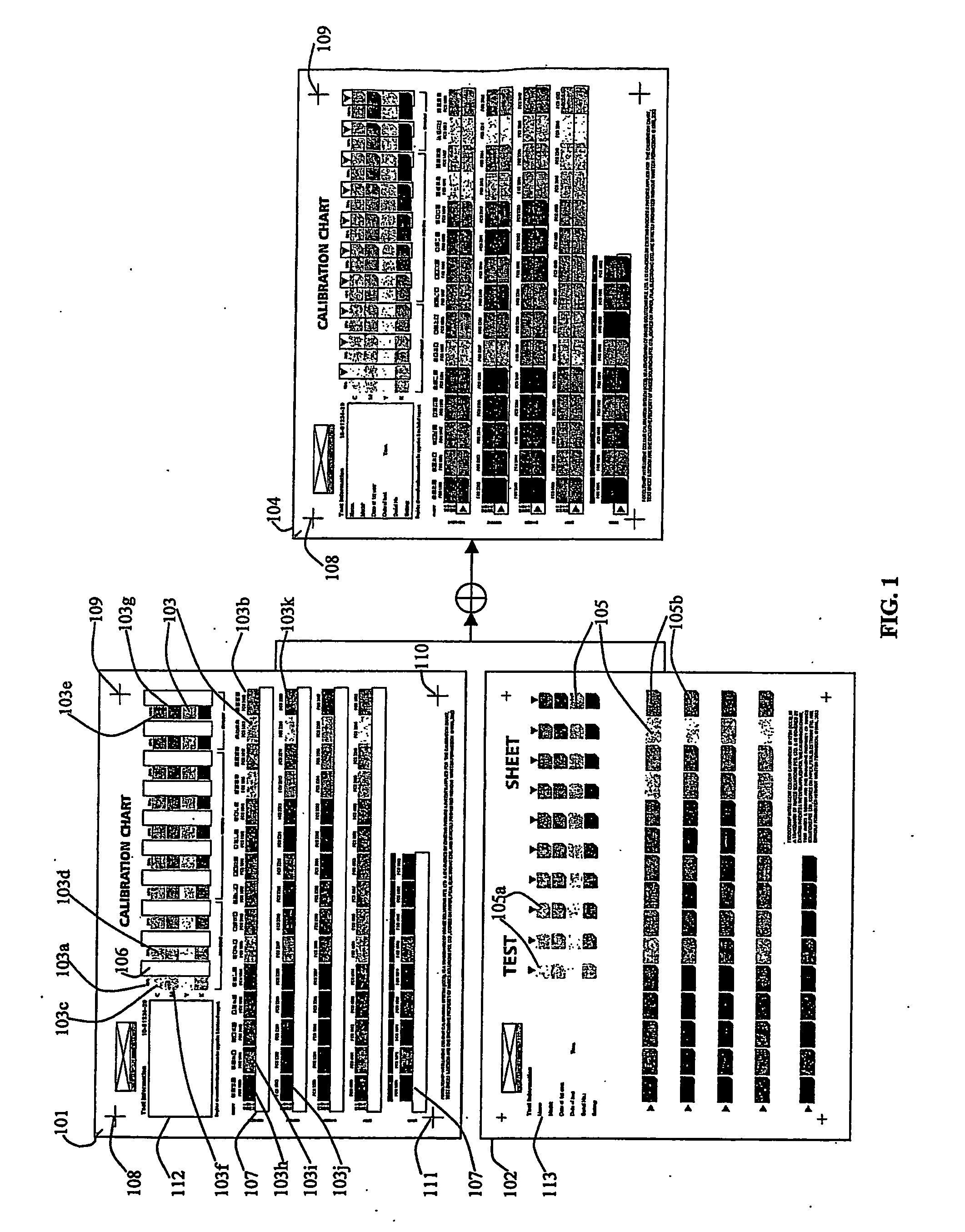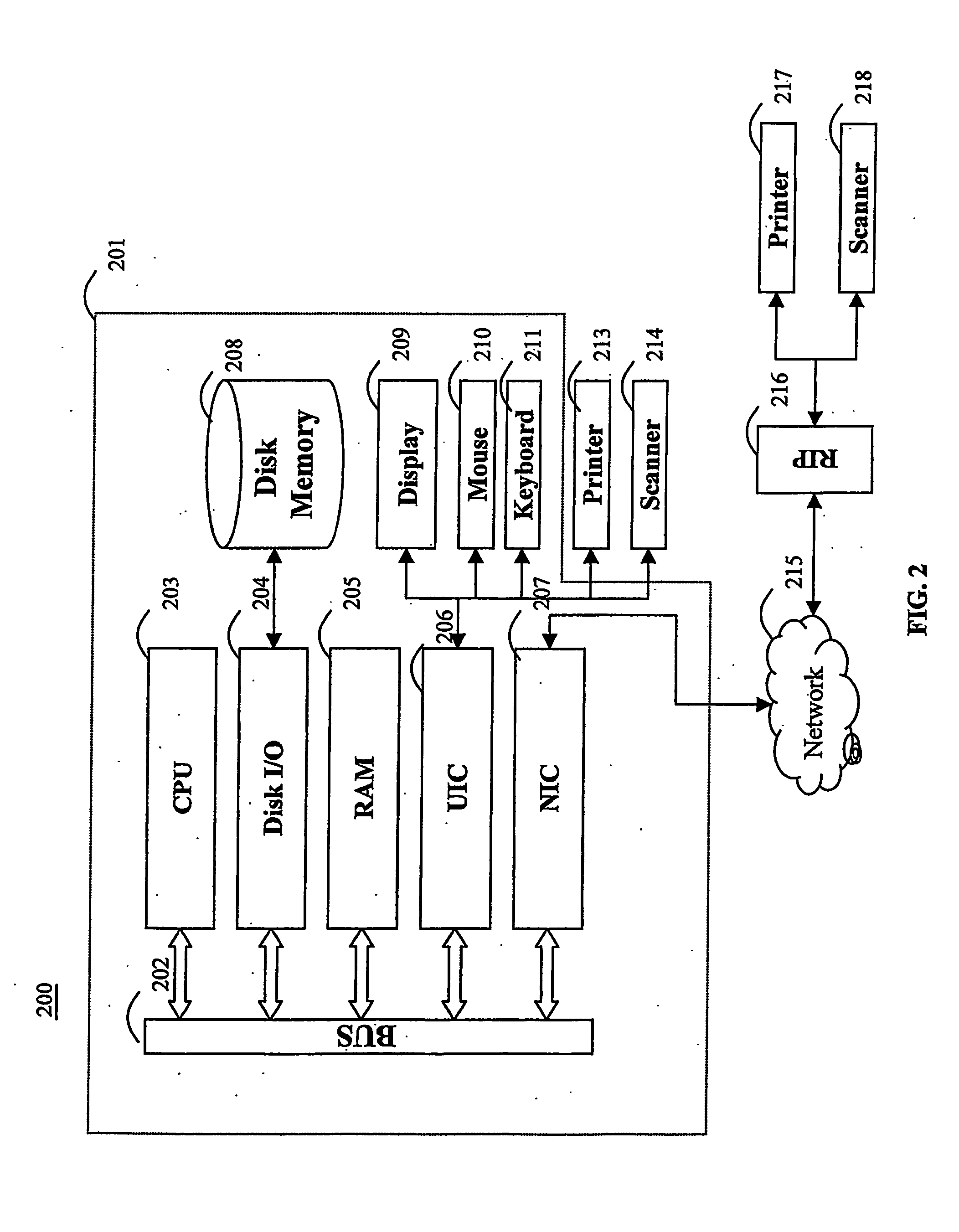Method and apparatus for calibrating colour print engines
- Summary
- Abstract
- Description
- Claims
- Application Information
AI Technical Summary
Benefits of technology
Problems solved by technology
Method used
Image
Examples
Embodiment Construction
[0067]FIG. 1 shows a calibration chart 101 and a test sheet 102 which are improvements over those disclosed in patent No. U.S. Pat. No. 5,953,990, the contents of which are incorporated herein by reference. In U.S. Pat. No. 5,953,990, a specific type of paper must be used as the test sheet since both the images of the test sheet and master sheet are printed on the same paper for the calibration process. However, the actual paper being used for normal printing or copying is usually different from the specific type of paper used for the calibration and thus the colour characteristics of the “calibrated” print engine drift due to the paper difference.
[0068] In the present invention, a calibration chart 101 is a pre-printed chart of a calibration data file comprising Cyan (C), Magenta (M), Yellow (Y) and K (Black) base colorants. The data file is stored in a computer system as an image file such as TIFF or PDF format and pre-printed on a specific type of paper. As shown in FIG. 1, the ...
PUM
 Login to View More
Login to View More Abstract
Description
Claims
Application Information
 Login to View More
Login to View More - R&D
- Intellectual Property
- Life Sciences
- Materials
- Tech Scout
- Unparalleled Data Quality
- Higher Quality Content
- 60% Fewer Hallucinations
Browse by: Latest US Patents, China's latest patents, Technical Efficacy Thesaurus, Application Domain, Technology Topic, Popular Technical Reports.
© 2025 PatSnap. All rights reserved.Legal|Privacy policy|Modern Slavery Act Transparency Statement|Sitemap|About US| Contact US: help@patsnap.com



